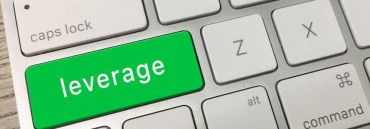DEFINITION of Leverage
Leverage is a concept that can enable you to multiply your exposure to a financial market without committing extra investment capital.
WHAT IT IS IN ESSENCE
Leverage comes from using borrowed capital. It is a funding source when investing to expand the company’s asset base and cause returns on risk capital. It is an investment strategy of using borrowed money. The use of different financial instruments or borrowed capital, to increase the potential return of an investment.
This concept can also refer to the amount of the company’s debt uses to finance assets. When someone says that some company, property or investment has “highly leveraged,” it means that item has more debt than equity.
In investing, the amount needed to open and maintain a leveraged trade is called the margin. Trading using leverage is sometimes referred to as margin trading.
Leverage and margin are not the same. Leverage makes reference to taking on debt. While the margin is debtor borrowed money a firm uses to invest in other financial instruments. A margin account allows you to borrow money from a broker. For a fixed interest rate to buy securities, options or futures contracts. While the anticipation of receiving substantially high returns.
Margin can be used to create leverage.
Leverage is available on several financial products, including spread bets, CFDs and forex trades. When trading using it, the provider will only ask for a fraction of the total value of your position. The rest is effectively lent to you by the provider.
Profits and losses are based on the total size of the position. So the end result of a trade can be much larger than the initial outlay. Losses can end up exceeding the initial deposit.
HOW TO USE
For example, you want to open a position at XYZ company.
If the stock is margined at 5%, shares are valued at #45 and you want to trade 500 shares, your margin will be $4500. This is because the margin is calculated as
Number of shares x share price x margin percentage
So 500 shares x $45 per share x 20% = 4500
Therefore, when trading on leverage, in order to obtain an exposure equal to 500 shares in XYZ, you only need to hold a deposit of $4500 instead of buying $22,500 worth of shares in the underlying market.
Leverage is a complex tool. In theory sounds great, and the use it can be profitable, but the opposite is also true.

